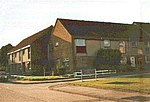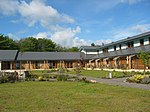Woodside, Aberdeen
Woodside is part of the city of Aberdeen. It came into existence as a quoad sacra parish within the parish of Old Machar in 1834, under an act of The General Assembly of the Church of Scotland of 31 May 1834 (IX. Sess. 10, 31 May 1834. – Declaration Enactment as to Chapels of Ease), and was named for the principal residence of the area, Woodside House. Within this parish which was bounded to the north by the River Don there were three villages, Woodside, Tanfield and Cotton (also known as Nether Cottown). Its population in 1841 was 4,893 living in 440 houses. By 1868 it had become a police burgh and the community was being described as a village in its own right (distinct from the quoad sacra parish of which it was the largest part), and a suburb of Aberdeen. It was part of the Aberdeen Burgh Parliamentary constituency.By 1881, it had developed into a community of 5,452 (the population of quoad sacra parish population growing to 5,928). It had its own separate post office, a railway station, paper works, a free library, a public school, and a number of churches of various denominations. Ten years later, in 1891 it, (along with Old Aberdeen and Torry) was formally incorporated into the city of Aberdeen.
Excerpt from the Wikipedia article Woodside, Aberdeen (License: CC BY-SA 3.0, Authors).Woodside, Aberdeen
Great Northern Road, Aberdeen City Woodside
Geographical coordinates (GPS) Address Nearby Places Show on map
Geographical coordinates (GPS)
| Latitude | Longitude |
|---|---|
| N 57.170754 ° | E -2.1252 ° |
Address
Great Northern Road 426
AB24 2BA Aberdeen City, Woodside
Scotland, United Kingdom
Open on Google Maps










